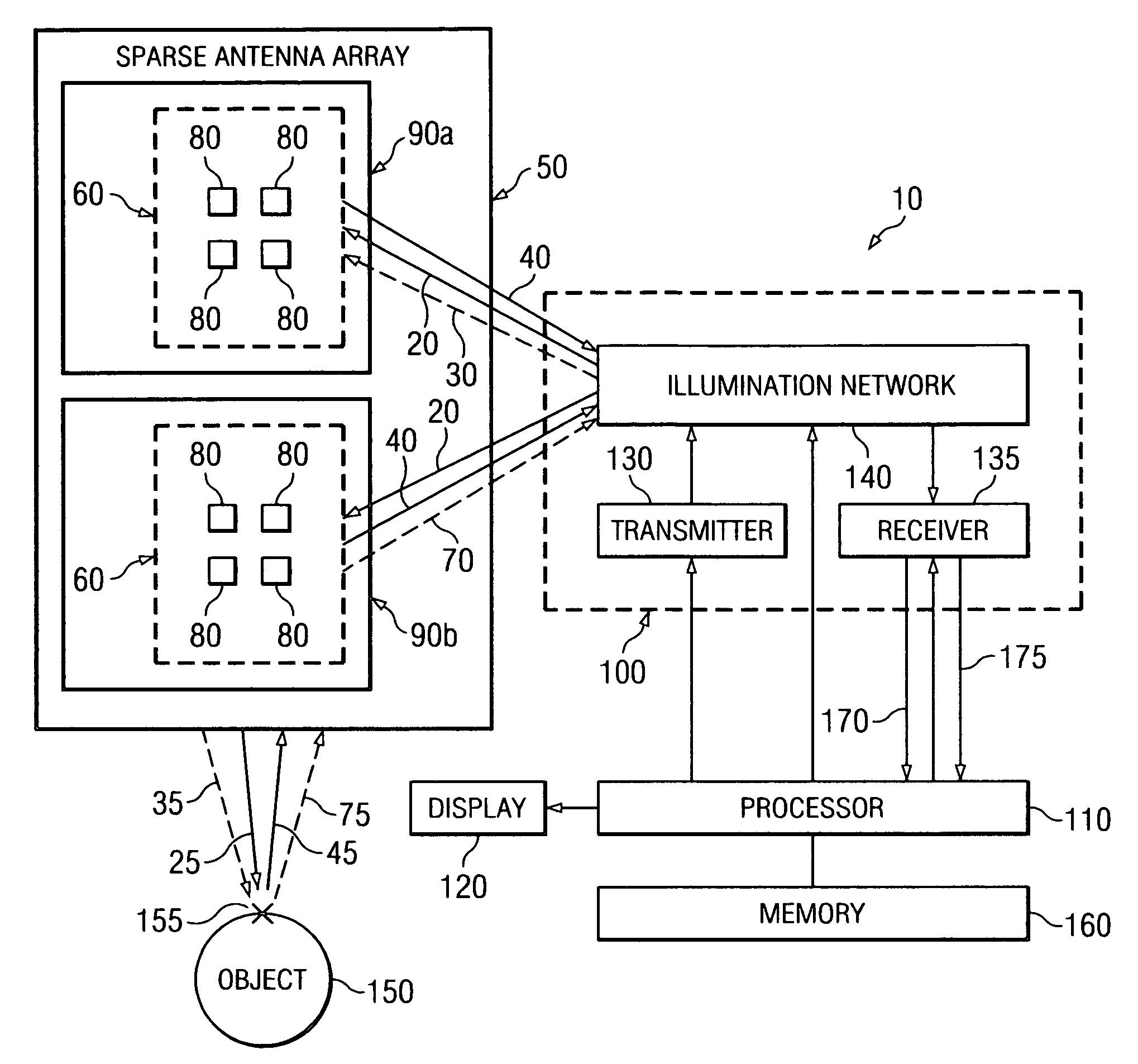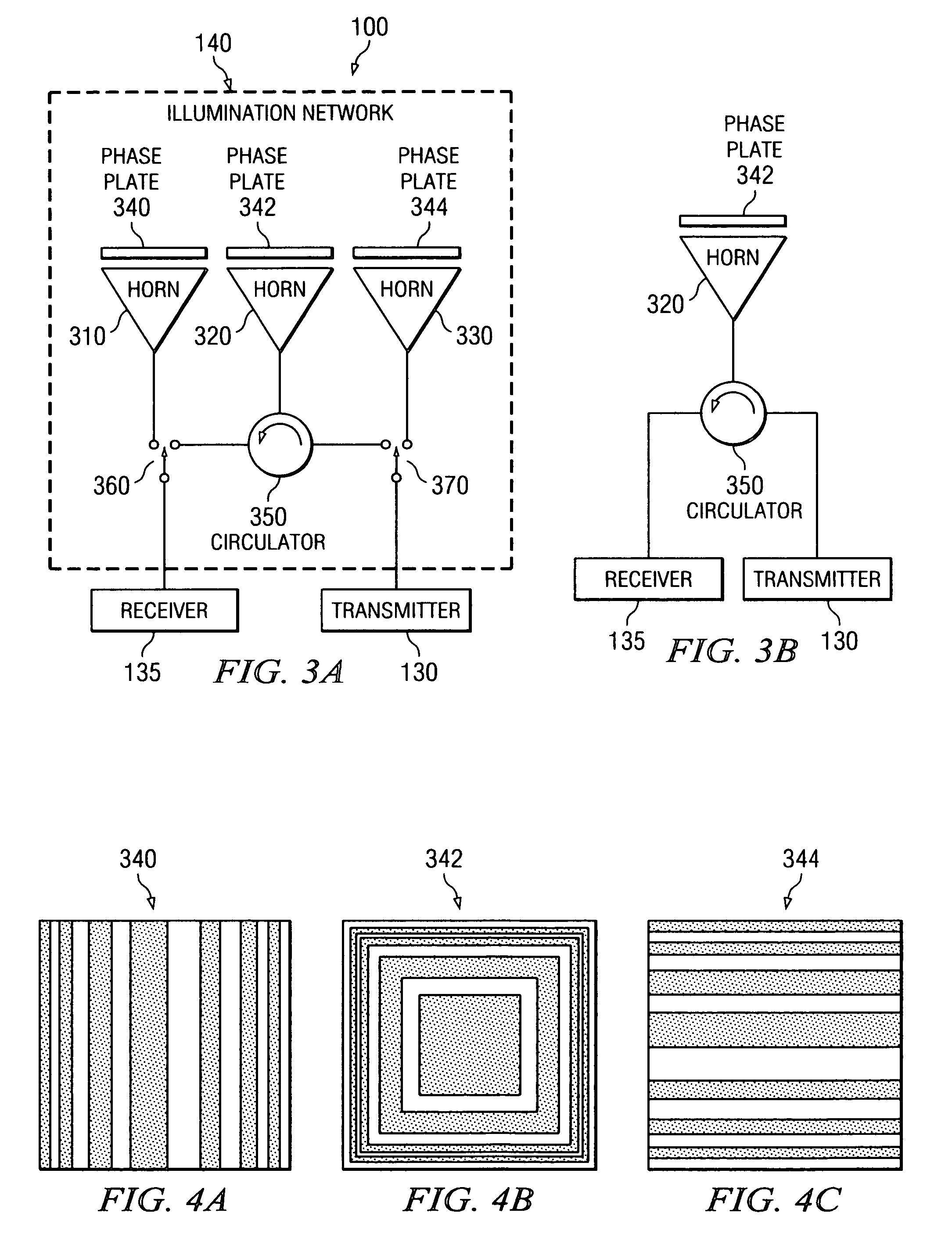System and method for microwave imaging with suppressed sidelobes using a sparse antenna array
a technology of antenna array and sidelobe, which is applied in the field of system and method for microwave imaging with suppressed sidelobes using a sparse antenna array, can solve the problems of quadratic cost dependency, scale up, and the number of antenna elements, and achieve the effects of suppressing sidelobes, destructively canceling sidelobes, and enhancing main scanning lobes
- Summary
- Abstract
- Description
- Claims
- Application Information
AI Technical Summary
Benefits of technology
Problems solved by technology
Method used
Image
Examples
Embodiment Construction
[0033]As used herein, the terms microwave radiation and microwave illumination each refer to the band of electromagnetic radiation having wavelengths between 0.3 mm and 30 cm, corresponding to frequencies of about 1 GHz to about 1,000 GHz. Thus, the terms microwave radiation and microwave illumination each include traditional microwave radiation, as well as what is commonly known as millimeter-wave radiation.
[0034]FIG. 1 is a schematic diagram of a simplified exemplary microwave imaging system 10, in accordance with embodiments of the present invention. The microwave imaging system 10 includes a one or more sparse antenna arrays 50 (only one of which is shown for convenience), a microwave illumination system 100, a processor 110, a memory 160 and a display 120. The sparse antenna array 50 is capable of transmitting microwave illumination and / or receiving microwave illumination via antenna elements 80 to capture a microwave image of an object 150 (e.g., suitcase, human subject or any...
PUM
 Login to View More
Login to View More Abstract
Description
Claims
Application Information
 Login to View More
Login to View More - R&D
- Intellectual Property
- Life Sciences
- Materials
- Tech Scout
- Unparalleled Data Quality
- Higher Quality Content
- 60% Fewer Hallucinations
Browse by: Latest US Patents, China's latest patents, Technical Efficacy Thesaurus, Application Domain, Technology Topic, Popular Technical Reports.
© 2025 PatSnap. All rights reserved.Legal|Privacy policy|Modern Slavery Act Transparency Statement|Sitemap|About US| Contact US: help@patsnap.com



